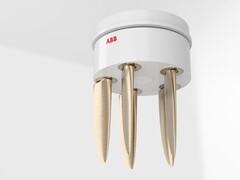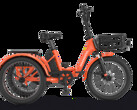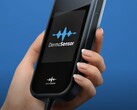ABB's Dynafin propulsion system is now ready for practical use, reports The Maritime Executive. Instead of a large blade, Dynafin works with a rotating disk from which individually controlled blades protrude. This is intended to increase the efficiency of small to medium-sized ships.
The idea is not new, as ABB admits. It has been around for a good 100 years if you ignore nature, and the design was inspired by the movements of a whale fin. According to Maritime Executive, the large disk rotates at 30 to 80 revolutions per minute.
Maritime Executive spoke to ABB and the Ritz Carlton Yacht Collection about this. For the study, the approximately 240-meter-long RCYC Ilma was used as the test model for the Dynafin. The older The Voith Schneider Propeller functions similarly. Luxurious ships are a particular target market for the concept, as ABB promises quiet and low-vibration operation. However, the Ilma will still be equipped with a conventional drive in 2024.
The system is expected to save around 20% fuel and 100 cubic meters of space. However, the Dynafin drive does not quite achieve the required performance and is 12% weaker than two traditional 5.5 MW ABB azipod units.
Efficient steering
In the long rung, ABB promises quickly responsivity from the propulsion system combined with high precision control. Direction and thrust should react very quickly because the individual blades are able to react more quickly thanks to the separate control. Moreover, the system makes it possible to maintain the position of a ship with little energy input.
For the underwater world, noise levels are expected to be lower than typical ship propellers. Maintenance costs are also said to lower due to fewer mechanical parts.
According to ABB, Dynafin is the result of more than ten years of research. The project is intended to be commercially available from 2026.
Dynafin is not the only drive that is attracting attention again after a long time. The hydrofoil concept, still in use today in passenger ships such as the fast Boeing 929 between South Korea (Busan) and Japan (Fukuoka), is also being developed further on a small scale. In 2020, a neue Boeing 929 was produced by Kawasaki Heavy Industries, which operates in regional traffic. Jetfoils are a popular alternative to airplanes between Busan and Fukuoka and are just as fast. However, the technology is now outdated due to lack of research. Turbines are thus very old technology in aviation.
For some years now, Candela has been working on a new hydrofoil, the P-12, which can transport 30 passengers.
Source(s)
ABB Dynafin via The Maritime Executive


 Deutsch
Deutsch English
English Español
Español Français
Français Italiano
Italiano Nederlands
Nederlands Polski
Polski Português
Português Русский
Русский Türkçe
Türkçe Svenska
Svenska Chinese
Chinese Magyar
Magyar






